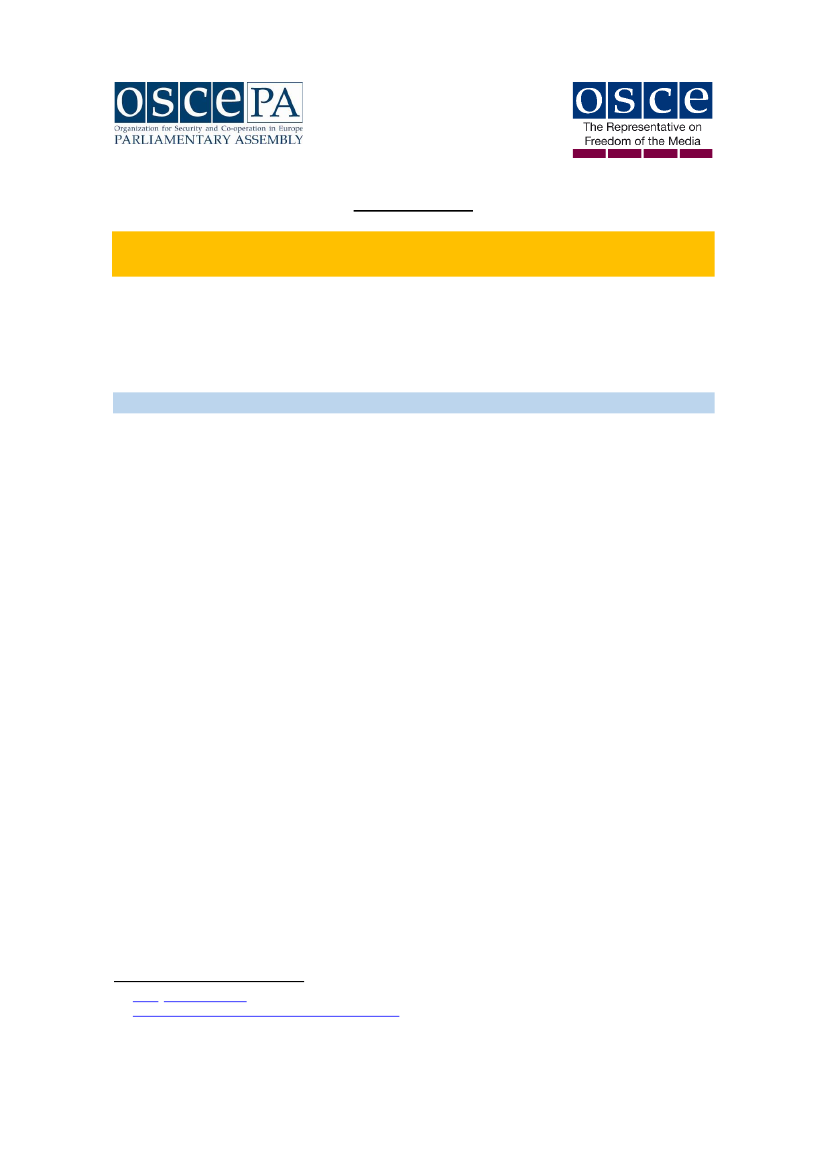
CONCEPT NOTE
SAFETY OF FEMALE JOURNALISTS ONLINE: THE ROLE OF PARLIAMENTARY
ACTION
Joint Web Dialogue event by the OSCE Parliamentary Assembly (OSCE PA) and the OSCE
Representative on Freedom of the Media (OSCE/RFoM)
Online // Wednesday, 20 April 2022, 15.00-17.00 CEST
BACKGROUND
Online harassment, discrimination and violence have become a serious issue that journalists
and media actors face on a daily basis. In this regard, female journalists are particularly
exposed to, and disproportionally confronted by multifaceted forms of online violence. This is
confirmed by numerous reports and studies.
1
For instance, a global survey conducted in 2020
by UNESCO and the International Center for Journalists (ICFJ)
2
revealed that 73 percent out of
625 women journalists surveyed reported to have experienced online violence
–
with only 11
percent of them claiming to have reported such cases to the police. Gender-based violence
against journalists online is a global phenomenon impacting their every-day work and well-
being.
Such violence is not only destructive and, in some cases, fatal for journalists
–
it has also a
tremendously negative impact on the freedom of expression, the pluralism of opinions and
the information landscape overall, as it leads to self-censorship and entails a chilling effect,
which adds up to a global decline of press freedom.
3
Moreover, it negatively influences
aspirations of women to pursue a career in journalism, therefore, further shrinking plurality
and the role of journalists in maintaining checks and balances, fundamental for the democratic
functioning of societies. Challenges caused by new and protracted conflicts, health
emergencies, natural disasters, and other emergency situations are ramping up cases of online
violence against female journalists who are reporting on these issues.
Safety of all journalists is a prerequisite not only for media freedom, but for justice,
democracy, as well as for the fulfillment and enjoyment of human rights more broadly. Attacks
against journalists pose a direct threat to democracy, which is why all forms of violence and
in particular increased risks of threats for women journalists need to be reflected in and
adequately addressed by the national legislative and policy frameworks. By adopting new and
updating existing laws, as well as by ensuring their effective and meaningful implementation,
1
2
3
OSCE, UNESCO and ICFJ
reports.
https://unesdoc.unesco.org/ark:/48223/pf0000375136.
83 percent of the world’s population experienced a decline in press freedom in their country over the past five years as
reported by Varieties of Democracy (V-Dem).
1